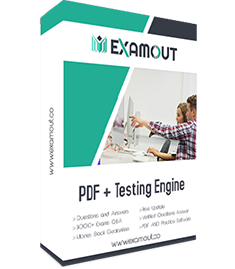A customer is evaluating the Platform Events solution and would like help in comparing/contrasting it with Outbound Messaging for real-time/near real-time needs.
They expect 3,000 customers to view messages in Salesforce.
What should be evaluated and highlighted when deciding between the solutions?
Northern Trail Outfitters is seeking to improve the performance and security of outboundintegrations from Salesforce to on-premise servers.
What should the Architect consider before recommending a solution?
Northern Trail Outfitters (NTO)has an affiliate company that would like immediate notifications of changes to opportunities in the NTO Salesforce instance. The affiliate company has a CometD client available.
Which solution is recommended in order to meet the requirement?
A customer of Salesforce has used Platform Events to integrate their Salesforce instance with an external third-party Artificial Intelligence (AI) system. The AI system provides a prediction score for each lead that is received by Salesforce. Once the prediction score is received, the lead information is saved to Platform events for other processes. The trigger on the Platform Events is failing once this was rolled out to Production.
What type of monitoring should the IntegrationConsultant have considered to monitor this integration?
Northern Trail Outfitters has a registration system that is used for workshopsoffered at its conferences. Attendees use a Salesforce community to register for workshops, but the scheduling systemmanages workshop availability based on room capacity. It is expected that there will be a big surge of requests for workshop reservationswhen the conference schedule goes live.
Which integration pattern should be used to manage the influx in registrations?
Which two system constraint questions should be considered when designing an integration
to send orders from Salesforce to a fulfillment system?
Choose 2 answers
An integration architect has received a request to prevent employees that leave the company from accessing data in Salesforce after they are deactivated in the company's HR system.
What should the integration architect determine before recommending a solution?
Which two requirements should the Salesforce Community Cloud support for self-registration and SSO?
Choose 2answers
Northern Trail Outfitters wants to use Salesforce as a front end for creating accounts using the lead-to-opportunity process.
1. An order is created in Salesforce when the opportunity is closed and won, but the back-end ERP system is the data master for order,
2. Customer wants to be able to see within Salesforce all the stages of order processing like Order Created, OrderShipped, Order Paid that are within the retention window.
Which two message durability considerations should an Integration Architect make when designing a solution to meet these business requirements?
Choose 2 answers
A health care services company maintains a Patient Prescriptions System that has 50+
million records in a secure database. Their customer base and data set growing rapidly. They want to make sure that the following policies are enforced:
1. Identifiable patient prescriptions must exist only in their secure system's database and
encrypted at rest.
2. Identifiable patient prescriptions must be made available only to people explicit authorized in
the Patient Prescriptions System assigned nurses and doctors, patient, and people explicitly the
patient may authorize.
3. Must be availableonly to verified and pre-approved people or legal entities.
To enable this, the company provides the following capabilities:
1. One-time use identity tokens for patients, nurses, doctors, and other people that expire within
a few minutes.
2. Certificatesfor legal entities.
. RESTful services.
The company has a Salesforce Community Cloud portal for patients, nurses, doctors, and other authorized people. A limited number of employees analyze deidentified data in Einstein
Analytics.
Which two capabilities should the integration architect require for the Community Cloud portal
and Einstein Analytics?
Choose 2 answers

